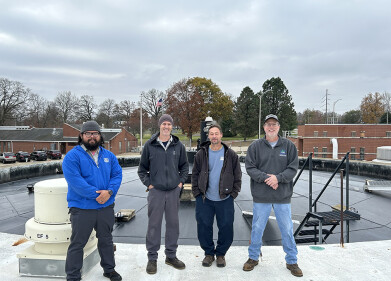Water/Wastewater
How Can Springs Tackle Microplastic Pollution?
Aug 17 2019
Plastic waste is a ubiquitous blight on the world’s rivers, lakes and oceans, stifling the growth of flora and poisoning fauna. Microplastics, which are far smaller in size and therefore harder to remove but easier for animals to ingest, are a far more dangerous concern, leading scientists to pursue novel ways of tackling this pervasive form of pollution.
Now, scientists from the University of Adelaide in Australia believe they may have struck upon an ingenious method of doing so. Through the use of tiny carbon-based magnets in the shape of coiled springs, the research team claim they can break up microplastic particles into smaller, more biodegradable component parts without harming nearby organisms. If successful, their efforts could prove to be a pivotal moment in the clean-up effort against plastic pollution.
Divide and conquer
While the microplastics found in cosmetics, knitwear, tyres and soft drink bottles are too small to be easily collected in a manner similar to other forms of plastic pollution, an easier option could be to break them down entirely so that they dissolve via a natural process. The most common form of engineering this reaction involves the creation of reactive oxygen species, which are chemicals that have a short life in water but are capable of chopping microplastics up into smaller, more soluble compounds.
Unfortunately, this kind of engineered nanotechnology can be both a solution and a problem, since reactive oxygen species are usually generated via the use of cobalt or iron, themselves heavy metals that are undesirable from an environmental perspective. As such, the researchers were keen to pinpoint an alternative method of creating the necessary chemicals.
Springing into action
Their solution involves carbon nanotubes in the form of a spring, treated with a nitrogen solution. This spiral shape allows for maximum surface area, increasing the exposure of nitrogen and thus optimising generation of the reactive oxygen species, while also boosting stability. In fact, the trial nanotubes were able to withstand eight hours in the harsh oxidative environment necessary for neutralising microplastics, removing a significant proportion of the pollution in that time.
Another neat facet of their research is the injection of manganese into the nanotube springs. This metallic element is buried deep enough inside the nanotubes’ structure to prevent it from leaching into the surrounding water, but shallow enough to still magnetise the spring. This will allow researchers to efficiently and easily collect the springs once they have done their job and redeploy them elsewhere.
Next steps
The next phase of the research will involve verifying whether the carbon nanotube technology is capable of neutralising all different kinds of microplastics. Since no microplastic particle is the same as another, it’s conceivable that some will remain unaffected by this technique, but the scientists behind it are hopeful they can strike upon a universally effective solution.
Furthermore, they are also endeavouring to identify any unintentional by-products of the process and determine whether these can be converted into beneficial factors rather than detrimental ones. “If plastic contaminants can be repurposed as food for algae growth, it will be a triumph for using biotechnology to solve environmental problems in ways that are both green and cost-efficient,” explained Shaobin Wang, lead author on the project.
Events
Apr 15 2025 Moscow, Russia
Apr 21 2025 Shanghai, China
May 11 2025 Vienna, Austria
May 18 2025 Algiers, Algeria
23rd International Water Management Exhibition
May 20 2025 Prague, Czech Republic














